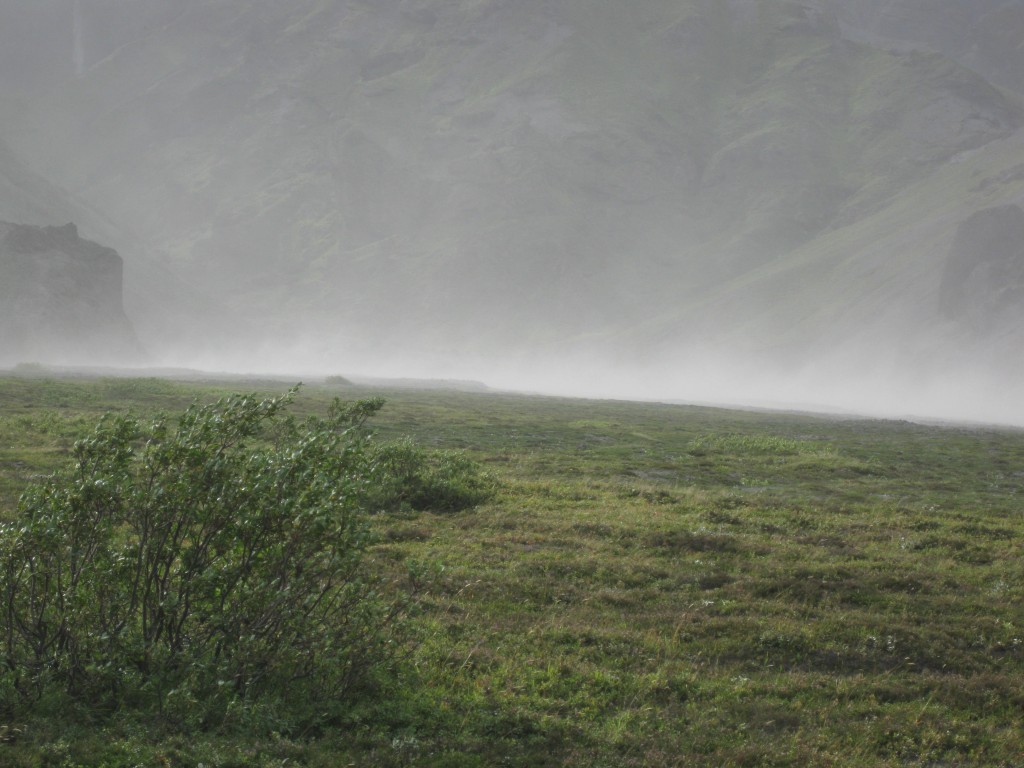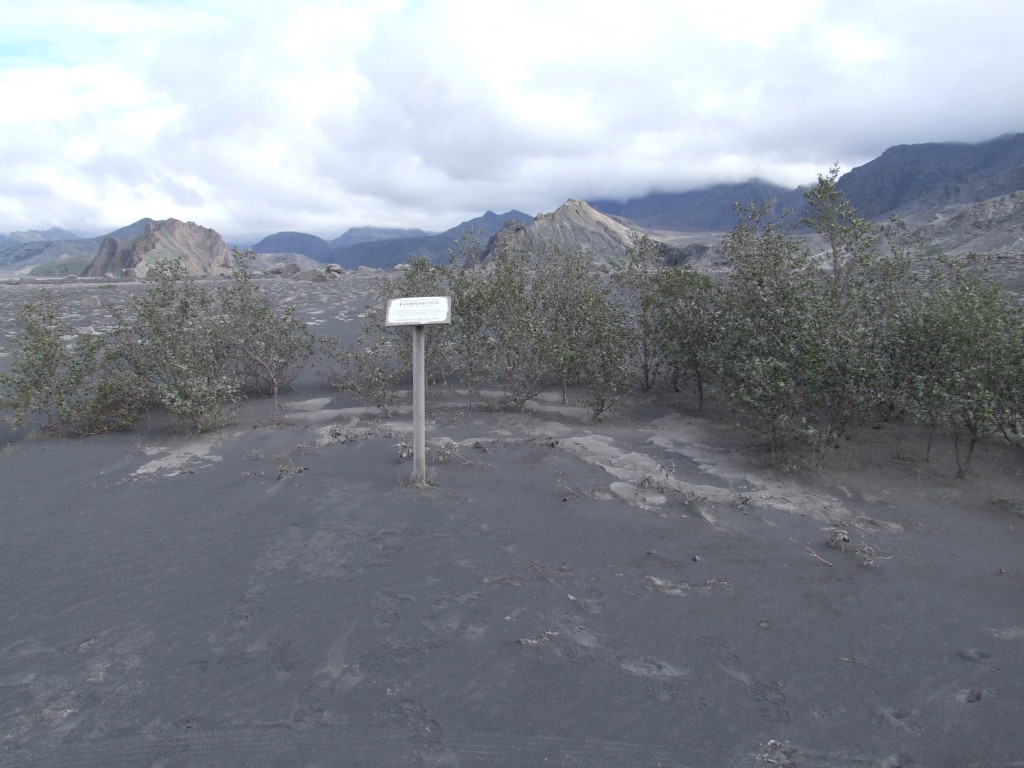11 June 2012
Planting trees in Iceland to shield against volcanic ash
Posted by kramsayer

Ash from the 2010 Eyjafjallajökull eruption is resuspended in the air by wind, blowing across vegetation-free areas. Efforts are in progress to replant landscapes in Iceland, to better protect ecosystems from ash storms such as this. (Credit: Sveinn Runólfsson, director of the Soil Conservation Service of Iceland)
GeoSpace is in Selfoss, Iceland this week, reporting from AGU’s Chapman Conference on Volcanism and the Atmosphere. Check back for posts on the science presented at the meeting, as well as field trips to nearby volcanoes and geologic features.
Selfoss, Iceland – Clinging to an island with 20 to 25 volcanic eruptions every century, Iceland’s already sparse vegetation lives under the threat of being pelted by tephra – the ash and rocks shot from volcanoes. Icelanders have traditionally made matters even more difficult, clearing vast birch forests across the island that, centuries ago, sheltered the smaller, more vulnerable vegetation. But now, Iceland is undertaking Europe’s largest reclamation project to replant birch and willows, especially in volcanically active areas, to help reduce erosion and improve the island’s ecological health.
“It’s part of a disaster risk reduction program,” said Anna Maria Ágústsdóttir, a researcher with the Soil Conservation Service of Iceland in Gunnarsholt. “Damage not only occurs during the initial ash-fallout, but can continue long after the eruption has ceased.”
When ash from a volcano settles into layers of tephra on the ground after an eruption, it can smother some of the vegetation. If winds pick up the ash and blow it across the landscape, the jagged edges of the grains can also pummel the grasses and shrubs. And without vegetation, the soils are more prone to erosion and other weathering events.
“The ash is abrasive, and the resuspended ash damages vegetation that was not damaged initially,” Ágústsdóttir said. “The greatest problem is when no vegetation holds the ash back, and it is repeatedly blown around, damaging and even burying vegetation in new locations.”

Ash from the 2010 Eyjafjallajökull eruption covers the low-growing vegetation at Þórsmörk, South Iceland, foreground, but does not affect trees. (Credit: Sveinn Runólfsson)
Trees can help interrupt this process by physically blocking the ash, buffering some of the winds across the surface, and stabilizing the soils, Ágústsdóttir explained. “Planting trees and shrubs builds up stronger ecosystems that can better endure disturbances such as volcanic activity,” she said.
Ágústsdóttir presented research on the ash hazard, along with information about the reclamation program, today in a poster at AGU’s Chapman Conference on Volcanism and the Atmosphere in Selfoss, Iceland.
So many of Iceland’s trees were cut down during the last 1,100 years that currently only 1 percent of Iceland remains forested. The 90,000 hectare (220,000 acres) reforestation effort is taking place near Hekla, a very active volcano that most recently erupted in 2000, ejecting 2.8 million cubic meters (3.7 million cubic yards) of tephra. The program involves planting small areas with birch and willows, and then allowing those trees to spread seeds over larger areas.
Ágústsdóttir is trying to drum up interest for other projects of this nature across Iceland that will be identified in an upcoming volcanic risk assessment. Icelanders have “always had a sensible, practical attitude toward volcanic activity,” Ágústsdóttir said. “They were farmers, and as such keen observers of nature, living close to this activity.”
However, in a harsh climate, Icelanders had to make a living and support their families with subsistence agriculture – and clearing the land, combined with volcanic eruptions, put pressure on the ecosystems and pushed them to a breaking point, she said. And it’s only in recent decades, Ágústsdóttir added, that the country has resources to start tackling the problem of erosion and prepare for the next eruption.
“Now we have the means to maybe do something about it,” she said.
–Kate Ramsayer, AGU Science Writer


 GeoSpace is a blog on Earth and space science, managed by AGU’s Public Information staff. The blog features posts by AGU writers and guest contributors on all sorts of relevant science topics, but with a focus on new research and geo and space sciences-related stories that are currently in the news.
GeoSpace is a blog on Earth and space science, managed by AGU’s Public Information staff. The blog features posts by AGU writers and guest contributors on all sorts of relevant science topics, but with a focus on new research and geo and space sciences-related stories that are currently in the news.